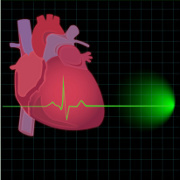There’s certainly no question that air pollution is bad for you. Those of us who live in urban areas are all too familiar with “ozone action days” where young children, the elderly, and those with breathing or lung disorders, and compromised immune systems are advised to stay indoors because the air is just too “dirty” to breathe. But does air pollution also contribute to other conditions such as heart disease? That’s the question that researchers at Michigan State University will be attempting to answer over the next five years.
The Environmental Protection Agency (EPA) recently identified Michigan State University as a Clean Air Research Center. Backed by an $8 million grant, the Great Lakes Air Center for Integrative Environmental Research will engage in three separate research programs examining the effect of air pollution and ozone on metabolic syndrome.
Metabolic syndrome is not a single condition, but rather a collection of risk factors which contribute to the development of heart disease (atherosclerosis) and diabetes. The risk factors include such things as a large waistline or excess belly fat, high triglyceride levels (type of fat in the blood), low levels of high-density lipoproteins (HDL or “good”) cholesterol, high blood pressure, high blood glucose or fasting blood sugar levels (possible indicator of diabetes), and obesity. A person is considered to have metabolic syndrome if they possess at least three metabolic risk factors.
The research programs at the University of Michigan’s newly established Clean Air Research Center will focus on such things as:
• how air pollution contributes to the development of cardiovascular risk factors such as high blood pressure, metabolic syndrome, and insulin resistance
• how short-term exposure to air pollution affects insulin resistance and high blood pressure
• evaluate effects of long-term exposure to air pollution
In addition to the University of Michigan, three other universities were also designated as Clean Air Research Centers - Harvard University, the University of Washington in Seattle, and Emory University/Georgia Institute of Technology in Atlanta. Approximately $32 million in grants will be distributed to the Centers to fund studies on air pollution and its impact to health.
Source:
Jason Cody, Air Pollution Exposure and Human Health, 08 Mar 2011, Medical News Today, http://www.medicalnewstoday.com/articles/218429.php
Air Pollution, Heart Disease and Stroke, American Heart Association, 08 Mar 2011, http://www.americanheart.org/presenter.jhtml?identifier=4419
What is Metabolic Syndrome, January 2010, National Heart Lung and Blood Institute, http://www.nhlbi.nih.gov/health/dci/Diseases/ms/ms_whatis.html
Exposure to air pollution contributes to the development of cardiovascular diseases (heart
disease and stroke).





Add a Comment2 Comments
Throughout the years, there have been many studies that linked air pollution to a host of health problems, and I am sure that heart attack is not just one of them. It is beneficial for everyone's health if people put more importance into keeping our air clean.
September 26, 2012 - 12:23amThis Comment
The water we drink and the air we inhale plays a lead role in our well being. But at present due to increase in pollution, people fall short of unpolluted air and water.Pollutants are very poisonous, and inhaling pollutants of any form will definitely increase the chances of you having issues with your health. Due to pollution, people with heart diseases are indeed at even higher risks.
Coronary heart disease (CHD), also called as the coronary artery disease (CAD) is one such heart disease that occurs in the coronary arteries. These coronary arteries are major suppliers of oxygen rich blood to the heart muscles. Each one of us knows that for the heart to function properly it needs regular supply of oxygen. CAD is a condition when fat, cholesterol, and calcium builds up in the coronary arteries. This composition of fat, cholesterol, and calcium present in the blood are referred as plaque. The condition when plaque builds up is often referred as atherosclerosis. Plaque reduces the flow of blood to the heart muscle by the formation of blood clot in the arteries which in turn can cause angina or sometimes even a heart attack. In simple words CAD can be referred as the abnormalities of the arteries that carry oxygen to the heart muscle. The images below will give you a complete picture of CHD.
March 19, 2011 - 4:43amhttp://www.heart-consult.com/articles/pollution-and-heart-disease
This Comment